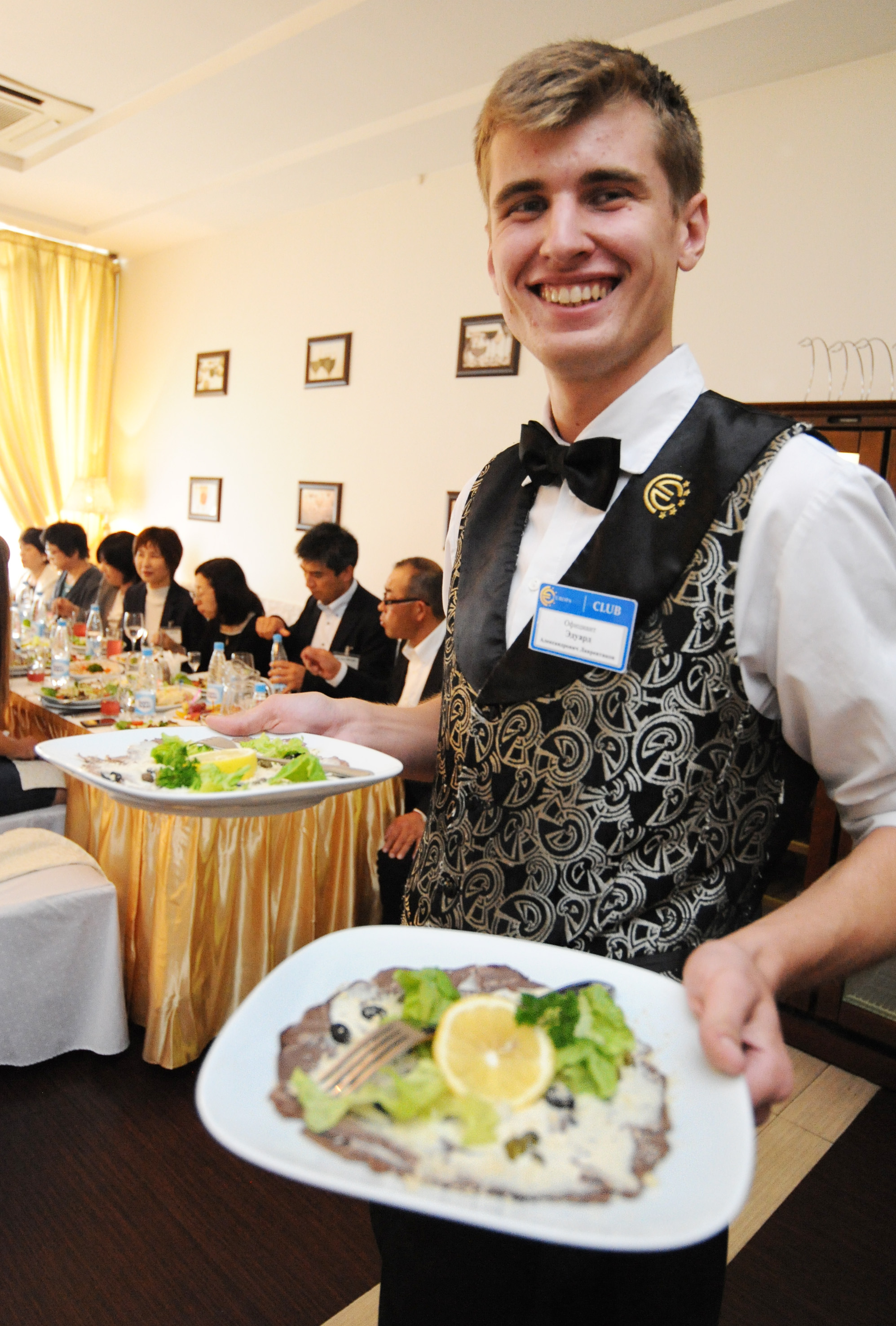Tomokatsu Sowa
Gomel, the second largest region in Belarus where more than 70,000 residents were forced to evacuate after the Chernobyl nuclear plant accident in 1986, has been recovering from the disaster helped by government’s reconstruction projects. In 2008, Europe, a large-scale amusement center with a casino and a dance hall, opened in Gomel, the main city in the region, becoming a popular entertainment spot for young people.
In restaurants in the center, waiters serve dishes such as salad sprinkled with grated cheese and neatly dished up pork, and pour berry juice into glasses.
In Gomel region, food and drinks served in restaurants also have to go through inspections. Staff from a national inspection agency visits to the restaurants four times a month to take samples of food for inspection.

A waiter serves dishes at a restaurant in Gomel, Belarus. Food and drinks served in the restaurant go through radiation inspections.
Years have passed since the accident and few customers are said to be concerned about radioactive substances, but Elena Kuznetsova, vice president of the center’s restaurant division, stresses that the inspections are for the sake of young people’s future.
Gomel region has 20 districts with relatively high levels of radiation in the air and soil. According to inspection data for food purchased by residents and brought to an inspection agency in the region, 9% of the products exceed the safety limit for cesium-137, and 1% for strontium-90.
Although measures to reduce radioactive substances are taken for farm products, high levels of radioactive substances are detected from wild mushrooms, berries and meat from wild animals. Some mushrooms even showed cesium levels of nearly 20 times as high as the safety limit of 370 becquerels per kilogram.
Acknowledging that radioactive substances still remain in the region, inspection agencies have taken several inspection arrangements to recover consumer trust in food.
Processing companies which supply meat and fish to restaurants ship their products with radiation inspection certificates. Manufacturers of dairy products in the region conduct two-step inspections on ingredients and processed products. They also developed a technology to remove radioactive substances using centrifugal separators when producing sour cream from fresh milk.
Lyudmila Krakovskaya, superintendent of education for the region, says she trusts the inspections conducted by the agencies, adding that there is no need to worry about radiation levels in food products provided through distribution channels.
Nobuo Otomo, 51, who was a member of the delegation from Fukushima, says that multiple inspection arrangements in Belarus are working effectively and consumers are well aware that food products with radiation levels lower than the safety limit are safe.
Meanwhile, Otomo, a fruit farmer, feels that consumer attitudes towards safety limits differ in Japan and Belarus. In Japan, harmful rumors after the nuclear accident in Fukushima led to drops in sales of peaches and cherries sold for gifts, even if their radiation levels were far below the safety limit, he says.
Otomo says he is currently working on not only decontaminating his farmland but also replanting fruit trees, as he says his products will not sell unless their cesium levels become as close to zero as possible.
(Aug. 7, 2013)

